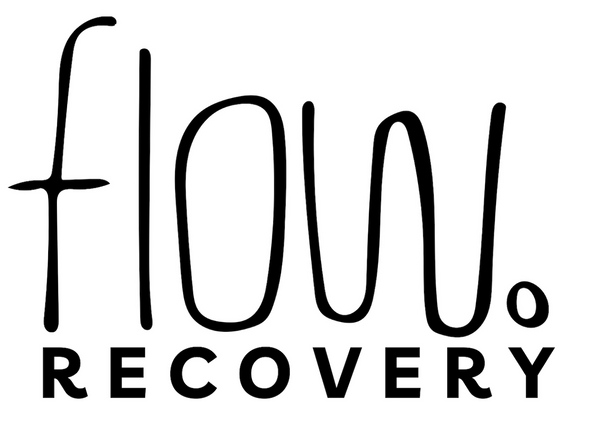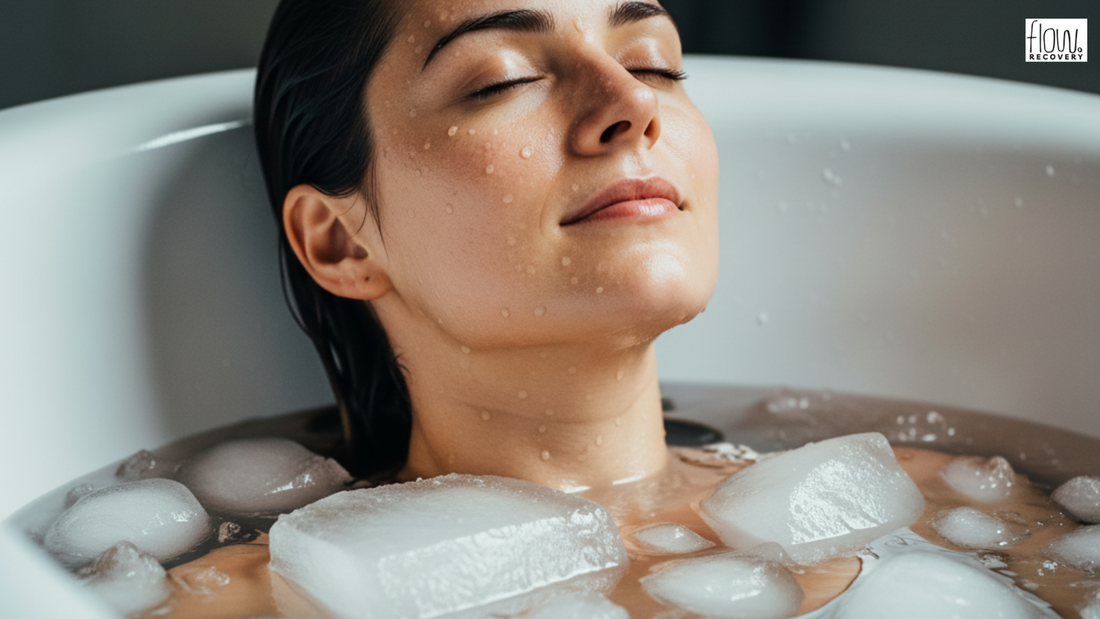Quick Summary:
- Optimal Temperature for Cold Plunge: Aim for 10–15°C for maximum recovery benefits - Colder water (10–12°C) = stronger recovery and muscle soreness relief - Warmer range (12–15°C) = more manageable for beginners.
- Ice-to-Water Ratio in the Ice bath tub: General guideline: 1:3 ice-to-water ratio - Example: 25kg of ice for a 100-liter tub - Adjust based on tap water temperature and personal comfort
- Preparing the Cold Plunge : Fill tub halfway with cold water - Add calculated ice - Use a thermometer to check temperature - Adjust ice or water as needed
- Maintaining Temperature in the tub: Use insulation or tub covers to retain cold - Check water periodically during use - Add more ice if water warms up
- Common Mistakes while taking an Ice bath : Using too much ice = extreme cold, discomfort - Ignoring safety = don’t stay too long - Skipping preparation = thermometer and ice planning are important
- Flow Recovery Products : Portable ice baths for home or travel - Thermometers and covers for easy temperature control - Recovery packs with all essential accessories
- Pro Tips for Beginners : Start with short sessions (2–3 min) - Focus on deep, controlled breathing - Combine with contrast therapy, stretching, and hydration - Listen to your body and exit if uncomfortable
Cold plunges are becoming a staple for anyone serious about recovery, performance, or overall wellness. From athletes to wellness enthusiasts, more people are discovering how sitting in cold water can help reduce muscle soreness, boost circulation, and even improve mood.
But one question comes up again and again: How much ice in the ice pod do you actually need to get the water perfect every time? Too little, and the water isn’t cold enough to feel the benefits. Too much, and it can be uncomfortable, or even risky. In this guide, we’ll break it all down and give you tips for a perfect cold plunge, every single time.
Cold Plunge Temperatures

Before we talk about ice, it’s important to know what temperature you’re aiming for. The ideal water temperature for a cold plunge is generally between 10°C to 15°C. At this range, the water is cold enough to trigger recovery benefits like reduced inflammation and improved blood flow, without being dangerously cold.
Different temperatures have slightly different effects:
- 10°C–12°C: Very effective for muscle recovery and reducing soreness, but can feel intense for beginners.
- 12°C–15°C: Still provides solid recovery benefits while being more manageable for those new to cold plunges.
- Above 15°C: The water is refreshing and mildly beneficial, but it won’t deliver the same level of recovery or circulation boost as colder water.
Knowing your target temperature will help you figure out how much ice you actually need.
How Much Ice to Use: General Guidelines
The amount of ice depends on a few things: the size of your tub, the starting temperature of your water, and the temperature you want to reach. As a general guideline:
- Ice-to-Water Ratio: Start with a 1:3 ice-to-water ratio by volume. This usually brings water into the optimal cold plunge range.
- Adjusting for Conditions: Hot summer days or warmer tap water might require a bit more ice. Cooler months may need less.
- Practical Example: For a 100-liter tub, start with about 25 kilograms of ice. This is roughly equivalent to five standard Australian 5kg ice bags.
Remember, these are starting points. You might need to tweak the amount a little based on your personal comfort and how cold your tap water starts.
Step-by-Step Guide to Preparing Your Cold Plunge

Getting your ice bath ready doesn’t have to be complicated. Here’s a simple process:
- Fill the Tub: Add cold tap water to your ice bath or portable tub. Fill it about halfway to start.
- Add Ice: Introduce the calculated amount of ice. Start with our recommended guidelines and adjust if needed.
- Check the Temperature: Use a thermometer to make sure the water is in your desired range.
- Adjust as Needed: If the water is too warm, add more ice. If it’s too cold, add a bit of water to bring it up slightly.
- Remember for Next Time: Once you find the right balance, take note of the ice amount for your future cold plunges, it makes setup much faster.
Tips for Maintaining Cold Plunge Temperature
Once your plunge is ready, keeping the water at the right temperature is key for consistent results:
- Use a Cover or Insulation: If your tub has a cover, keep it on when not in use. Insulation helps retain cold.
- Check the Temperature: During longer sessions, periodically monitor the water to ensure it doesn’t warm up too much.
- Replenish Ice: If the water starts to get warmer than your target, add a few extra ice blocks to maintain the chill.
Following these simple steps can make your cold plunge experience far more enjoyable and effective.
Common Mistakes to Avoid
Even small mistakes can make a cold plunge less effective, or uncomfortable. Here’s what to watch out for:
- Too Much Ice: Water that’s excessively cold can be hard to tolerate and may cause numbness or shivering beyond a comfortable level.
- Ignoring Safety: Don’t stay in the plunge for too long, especially if you’re new. Start with 2–3 minutes and gradually increase.
- Skipping Preparation: Using a thermometer and planning your ice amount might feel like extra work, but it makes a huge difference in your experience.
By avoiding these pitfalls, your cold plunge will be safe, effective, and enjoyable.
Flow Recovery Products to Enhance Your Cold Plunge Experience
Flow Recovery makes cold plunges simple and accessible. Their products are designed to help you get the perfect ice bath experience at home or on the go:
- Portable Ice Baths: Easy to set up and store, these tubs let you enjoy the benefits of cold therapy wherever you are.
- Accessories: Thermometers, covers, and chiller systems help you maintain the right water temperature without guesswork.
- Recovery Packs: Everything you need for a complete cold plunge session, from ice management to comfort accessories, is included.
Using the right equipment makes maintaining the perfect water temperature much easier and keeps your sessions consistent and effective.
Pro Tips for Beginners
If you’re new to ice baths, these tips can help you get started safely:
- Start Small: Begin with shorter sessions, around 2–3 minutes. Gradually increase as you adapt.
- Focus on Breathing: Deep, controlled breathing helps you stay calm and reduces the initial shock of cold water.
- Pair with Other Recovery Practices: Contrast therapy (alternating heat and cold), stretching, and hydration enhance recovery benefits.
- Listen to Your Body: Pay attention to signs like extreme shivering or numbness. It’s okay to exit and warm up if needed.
Conclusion
Cold plunges are a powerful tool for recovery, performance, and overall wellness, but getting the ice and temperature right is crucial. A good starting point is around 25 kilograms of ice for a 100-liter tub, with adjustments based on tap water temperature and personal comfort.
By following simple steps, filling the tub, adding ice, monitoring temperature, and adjusting as needed, you can enjoy the full benefits of cold therapy safely and effectively. Flow Recovery’s products make this even easier, offering portable tubs, accessories, and recovery packs to enhance your experience.
With practice, you’ll find the perfect ice balance for your body and your goals. Ready to take the plunge? With the right preparation, every session can be a refreshing, invigorating, and recovery-boosting experience.
Frequently Asked Questions
-
How much ice do I need for a cold plunge?
A good starting point is about 25 kilograms of ice for a 100-liter tub. Adjust depending on your tap water temperature and personal comfort. -
What is the ideal temperature for a cold plunge?
Aim for 10–15°C. Colder water (10–12°C) is best for recovery, while 12–15°C is easier for beginners. -
Can I use too much ice in an ice bath?
Yes, using too much ice can make the water uncomfortably cold and increase the risk of numbness or shivering. Always monitor your body’s response. -
How long should I stay in a cold plunge?
Beginners should start with 2–3 minutes and gradually increase as their body adapts. Experienced users can go longer, but always listen to your body. -
Do I need a thermometer for my cold plunge?
Yes, using a thermometer helps you reach the optimal water temperature and ensures a safe and effective ice bath. -
How can I maintain the temperature during my plunge?
Use insulated tubs or covers and check water periodically. Add more ice as needed to keep the temperature in the 10–15°C range. -
Can beginners do ice baths safely?
Absolutely! Start with short durations, focus on breathing, and gradually increase your time in the cold water. Cold showers can also be a good first step. -
How do Flow Recovery products help with cold plunges?
Flow Recovery offers portable ice baths, thermometers, covers, and recovery packs to make setting up, maintaining, and enjoying cold plunges simple and effective. -
Does cold water really help with recovery?
Yes! Cold plunges reduce muscle soreness, decrease inflammation, boost circulation, and can even improve mood and mental resilience. -
Can I combine cold plunges with other recovery methods?
Definitely. Pair your cold plunge with contrast therapy (hot + cold), stretching, hydration, and proper nutrition to maximize recovery benefits.


